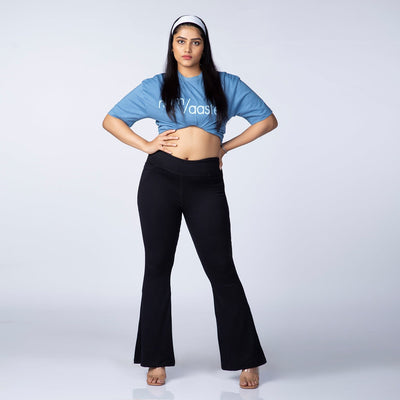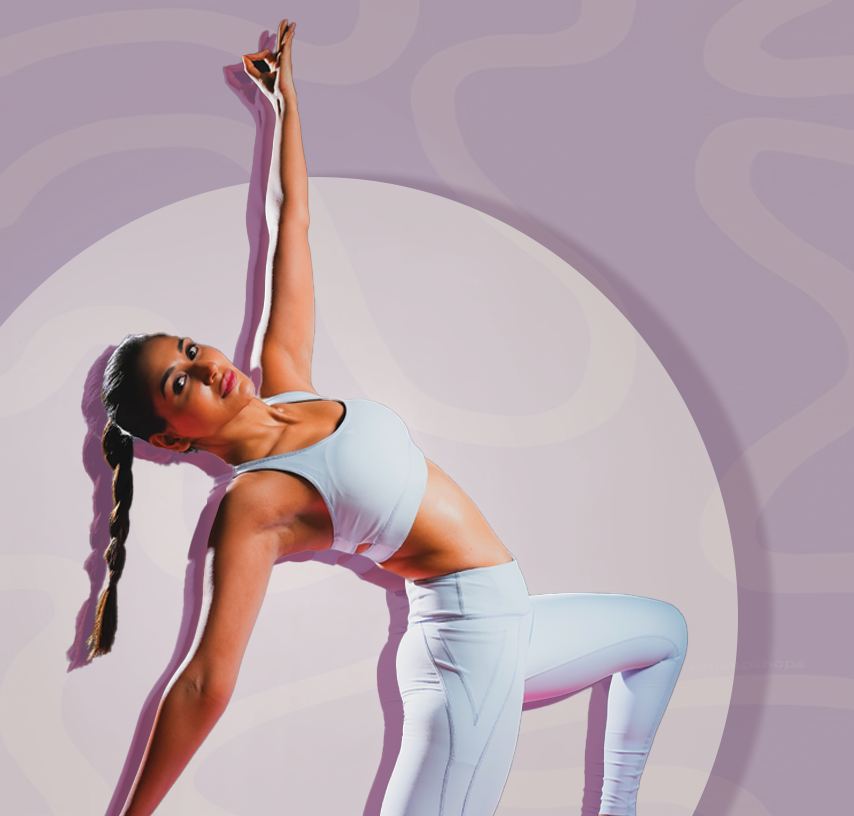paschimottanasana yoga, or the seated forward bend pose, is a powerful and transformative yoga pose that is often practised by beginners and advanced yogis alike. this pose can be challenging, but with regular practice, it can lead to significant physical and mental benefits. yogis and yoginis across the globe swear by this asana because it helps to improve your flexibility, reduce stress, and achieve a sense of inner calm and peace. it is also beneficial for stimulating the digestive system and relieving menstrual discomfort. so why not give paschimottanasana a try and see how it can transform your mind, body, and spirit?
what is paschimottanasana?
paschimottanasana is a yoga asana that involves a forward fold. this pose is typically practised while sitting on the floor with the legs extended in front of the body. the practitioner bends forward from the hips, keeping the back straight, and stretches the hamstrings, back, and spine. paschimottanasana is an excellent pose for improving flexibility, reducing stress, and calming the mind. however, it is important to practice this pose with proper alignment and under the guidance of a yoga instructor, especially if you are a beginner.the name paschimottanasana is derived from sanskrit, with "paschima" meaning "west" or "back," and "uttana" meaning "stretch" or "intense extension." the paschim side in english means the west direction. it has the same paschimottanasana in hindi meaning. this pose is called the seated forward bend because it involves folding forward from a seated position and stretching the back, hamstrings, and spine.
who can do paschimottanasana?
paschimottanasana is a pose that can be practised by anyone, regardless of age, gender, or fitness level. however, it is essential to practice this pose with proper alignment and under the guidance of a yoga instructor, especially if you are a beginner.
this pose is ideal for those who want to improve their flexibility, reduce stress, and calm their minds. it is also beneficial for people who suffer from menstrual discomfort or digestive issues. you must check out paschimottanasana drawings and paschimottanasana images online to get a clearer idea of what this leaning forward position asana is all about.
if you have tight hamstrings, it may be difficult to reach your feet or ankles in this pose. in such cases, you can use a strap or towel to help you reach your feet. you can also use a cushion or block under your knees to make the pose more comfortable.
however, if you have lower back problems or spinal injuries, it is important to practice this pose with caution. avoid this pose and go for simpler sitting asanas if you have a herniated disc, sciatica, or any other spinal condition that causes pain or discomfort.
paschimottanasana contraindications
like all yoga poses, paschimottanasana has some limitations or precautions that should be taken into consideration before practising the pose. let’s look at some of these paschimottanasana contraindications:
here are some of the contraindications for paschimottanasana:
- lower back problems or spinal injuries: paschimottanasana involves stretching the back, hamstrings, and spine. if you have a lower back problem or spinal injury, this pose may exacerbate the condition and cause pain or discomfort.
- herniated disc or sciatica: if you have a herniated disc or sciatica, avoid paschimottanasana. this pose can put pressure on the lower back and aggravate the condition.
- pregnancy: pregnant women can practice paschimottanasana, but it is important to do so under the guidance of a prenatal yoga instructor. avoid this pose if you are in the third trimester of your pregnancy.
- menstruation: women who are menstruating can practice paschimottanasana, but it is recommended to avoid this pose during the first two days of their period.
- high blood pressure: if you have high blood pressure, avoid holding your breath in this pose. breathe deeply and avoid any strain or tension in the neck or head.
- glaucoma: if you have glaucoma, avoid bending forward with your head below your heart. this can increase pressure in the eyes and worsen the condition.
it is essential to practice paschimottanasana with proper alignment and under the guidance of a yoga instructor, especially if you are a beginner. if you experience any pain or discomfort while practising this pose, stop immediately and consult your healthcare provider or yoga instructor.
it is important to take into consideration the contraindications and precautions before practising this pose. always listen to your body and practice with awareness and caution to avoid any injuries or complications.
paschimottanasana procedure
the paschimottanasana procedure is fairly simple and easy to follow. here is a step-by-step guide on how to practice paschimottanasana yoga effectively:
- begin by sitting on the floor with your legs extended in front of you. your feet should be flexed, and your toes pointing towards the ceiling.
- sit up tall and lengthen your spine. engage your core muscles and draw your navel towards your spine.
- inhale and raise your arms above your head. reach your fingertips towards the ceiling and lengthen your spine even more.
- exhale and fold forward from your hips. keep your spine long and your chest lifted as you fold forward.
- reach your hands towards your feet or ankles. if you are unable to reach your feet, you can use a strap or towel to help you.
- hold the pose for 5-10 deep breaths. with each inhale, lengthen your spine, and with each exhale, deepen the stretch.
- to release the pose, slowly inhale and come up to a seated position.
here are some tips to keep in mind while practising paschimottanasana or the lean forward position:
- avoid rounding your spine: keep your spine long and straight throughout the paschimottanasana yoga pose. avoid rounding your spine as this can cause strain on the lower back.
- engage your core: engage your core muscles to protect your lower back and deepen the stretch.
- breathe deeply: take deep, slow breaths in and out through your nose. this will help to calm your mind and deepen the stretch.
by following these simple steps and tips, you can safely and effectively practice this pose and reap its many benefits. remember to practice with awareness and listen to your body to avoid any injuries or complications.
paschimottanasana benefits
while looking for bending and sitting asanas names online, you will realize that paschimottanasana benefits are a lot. here are some of the key advantages of practising paschimottanasana:
- increases flexibility: paschimottanasana is an excellent pose for increasing flexibility in the hamstrings, lower back, and spine. as you practice this pose regularly, you will notice a significant improvement in your range of motion.
- reduces stress: paschimottanasana is a calming pose that helps to reduce stress and anxiety. the forward bend position helps to soothe the mind and relax the nervous system, promoting a sense of calm and relaxation.
- improves digestion: this pose stimulates the abdominal organs and can help to improve digestion. paschimottanasana can help to relieve constipation and other digestive issues.
- calms the mind: paschimottanasana is a meditative pose that helps to calm the mind and reduce stress. practising this pose regularly can help to promote mental clarity and focus.
- relieves menstrual discomfort: this pose can be beneficial for women experiencing menstrual discomfort. paschimottanasana can help to reduce cramps and relieve tension in the lower back and abdomen.
- improves posture: paschimottanasana strengthens the muscles of the back and improves posture. practising this pose regularly can help to relieve tension in the neck and shoulders and improve overall posture.
- promotes better sleep: this pose can help to promote better sleep by calming the mind and reducing stress and anxiety. practising paschimottanasana before bedtime can help to promote a more restful night's sleep.
by regularly practising this pose, you can increase flexibility, reduce stress, improve digestion, calm the mind, relieve menstrual discomfort, improve posture, and promote better sleep.
level of difficulty
the level of difficulty of this pose can vary depending on the individual's level of flexibility and experience with yoga. here is a breakdown of the level of difficulty for paschimottanasana:
-
beginner level:
for beginners, paschimottanasana can be a challenging pose due to tightness in the hamstrings and lower back. however, with regular practice, the flexibility and strength required for this pose can be developed. in the beginning, it's important to use props like a strap or towel to help you reach your feet or ankles. this will make the pose more accessible and comfortable.
-
intermediate level:
for intermediate yogis, paschimottanasana becomes more accessible as flexibility and strength improve. in this level, you may start to focus on deepening the stretch by folding further forward from the hips, while keeping the spine long and avoiding rounding. you may also begin to hold the pose for longer periods of time and start to practice more advanced variations.
-
advanced level:
for advanced yogis, paschimottanasana becomes a more advanced seated forward bend pose as it requires significant flexibility and strength in the hamstrings, spine, and shoulders. at this level, you may start to practice the pose with straight legs and without the use of props. you may also begin to explore more advanced variations of such bending yoga poses that could also involve western poses like side stretches or twists.
paschimottanasana is a pose that can be practised by yogis of all levels, from beginner to advanced. the level of difficulty of this pose depends on the individual's level of flexibility and experience with yoga. with regular practice and patience, anyone can improve their flexibility and strength and eventually achieve this pose.
easy modification for beginners
with some simple modifications, beginners can make this pose more accessible and comfortable. here are some easy modifications for beginners of paschimottanasana:
- use props: using props such as a strap, towel, or block can help make the pose more accessible for beginners. for example, if you're unable to reach your feet, you can use a strap or towel around your feet and hold onto the ends of the strap to gently pull yourself forward. you can also use a block under your hips to elevate yourself and reduce the intensity of the stretch.
- bend your knees: if you're having trouble straightening your legs, you can bend your knees slightly. this will help to reduce the tension in your hamstrings and make the pose more accessible. as you progress and your flexibility improves, you can gradually straighten your legs.
- start with a seated forward bend: before attempting paschimottanasana, it's helpful to practice a seated forward bend. in this pose, you simply sit with your legs extended in front of you and reach forward as far as you can comfortably. this will help to prepare your body for the more intense stretch of paschimottanasana.
-
take it slow: it's important to practice paschimottanasana bend position slowly and mindfully, listening to your body and stopping if you feel any pain or discomfort. remember that yoga is not a competition and it's okay to take your time and progress at your own pace.
- wear good-quality yoga wear: for maximum productivity and comfort, while practising paschimottanasana, you should wear well-fitted and breathable clothes. aastey’s impressive line of soft, sustainable and size-inclusive clothing is all that you need to make your yoga routine effective and fun. made of recycle materials, aastey’s sports bras, leggings and tank tops are not only comfortable and breathable but also allow maximum ease of movement while making you look stylish at all times.
paschimottanasana is one of those back bending asanas that can be challenging poses for beginners. however, with these simple modifications, it can be made more accessible and comfortable. don't be afraid to use props or modify the pose to suit your needs. if your practice this pose regularly, you'll gradually improve your flexibility and strength and be able to achieve this pose comfortably.


































